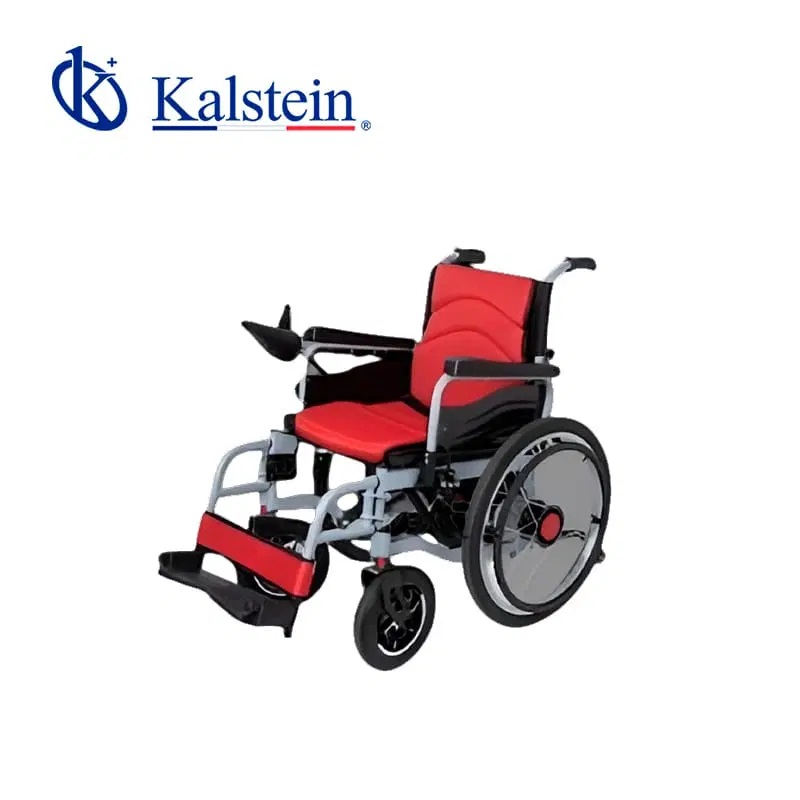Wheelchairs are an essential tool for the mobility and independence of millions of people worldwide.
In this article, we will conduct a comprehensive review of the medical line wheelchairs, highlighting their design, features, performance, and how they contribute to improved clinical outcomes.
Are you yearning for top-tier medical equipment, ready to enhance the efficiency of your laboratory? Visit https://kalstein.de/category-product/medical-line/wheelchair/ to explore our high-end catalog, packed with the best finds at the most competitive prices. Excellence marks our brand, we innovate and manufacture high-precision equipment, both reliable and durable to meet your needs. Why wait? Make your quick and secure online purchase, take the leap towards the future of medical technology today. https://kalstein.de/
Ergonomic Design and Functionality
The design of a wheelchair is crucial to ensuring the comfort and mobility of the user. Medical line wheelchairs stand out for their ergonomic design, which adapts to the anatomical needs of the user. These chairs are designed with high-quality materials that ensure durability and resistance without compromising comfort. The chair’s structure allows for even weight distribution, thus reducing the risk of pressure ulcers, a common problem among wheelchair users.
In addition to their ergonomic design, these wheelchairs offer exceptional functionality. They are equipped with adjustment systems that allow the customization of seat height, backrest angle, and footrest position. This adjustability is essential for providing proper posture, which in turn improves the user’s quality of life. The ease of use and customization capabilities make these wheelchairs an ideal choice for both home and clinical settings.
Advanced Technology in Medical Assistance
Precision in medical assistance is a fundamental aspect of medical line wheelchairs. These wheelchairs incorporate advanced technology that enhances the user experience and provides significant support to healthcare professionals. For instance, some chairs are equipped with pressure sensors that continuously monitor the user’s weight distribution. This information can be used to automatically adjust the seat position and prevent potential health complications.
Another technological innovation is the integration of communication systems between the wheelchair and medical devices. This allows healthcare professionals to monitor the user’s status in real-time and make necessary adjustments remotely. This connectivity not only improves precision in medical assistance but also facilitates personalized and proactive care, leading to improved clinical outcomes.
Performance and Maneuverability
The performance of a wheelchair is a key factor in its effectiveness. Medical line wheelchairs are designed to offer superior maneuverability, allowing users to move easily in different environments. These chairs are equipped with high-traction wheels that provide optimal grip on various surfaces, from smooth floors to uneven terrain.
Additionally, the braking system of these chairs is highly efficient, providing extra security for the user. The ability to make tight turns and move in confined spaces is another notable aspect of these chairs’ performance. The combination of these elements ensures that users can maintain their independence and mobility, regardless of the circumstances.
User Comfort and Well-being
Comfort is a crucial aspect for wheelchair users, as they spend long periods sitting. Medical line wheelchairs are designed to maximize user comfort through the use of padded and breathable materials. The seat and back cushions are made with high-density foam that provides adequate support and reduces the risk of discomfort.
In addition to physical support, these chairs are designed to promote the user’s overall well-being. The adjustable seat and backrest position allow for maintaining proper posture, which is essential for avoiding musculoskeletal issues. The ergonomic design also helps reduce fatigue, enabling users to carry out their daily activities more easily and comfortably.
Impact on Clinical Outcomes
Medical line wheelchairs not only improve mobility but also have a significant impact on clinical outcomes. The customization capability and advanced technology incorporated into these chairs allow for more precise and effective care. For example, continuous pressure monitoring and connectivity with medical devices can help prevent complications such as pressure ulcers and infections, which are common among wheelchair users.
Furthermore, the ergonomic design and adjustability contribute to better posture and body alignment, which can reduce pain and improve the user’s quality of life. These benefits not only directly affect the user’s well-being but can also reduce the workload for caregivers and healthcare professionals, enabling more efficient and effective care.
User Reviews and Satisfaction
User satisfaction is a key indicator of the effectiveness of any medical device. Medical line wheelchairs have received positive feedback from users and their caregivers. Users appreciate the combination of comfort, functionality, and advanced technology that these chairs offer. Reviews highlight the ease of use, durability, and improvement in quality of life experienced by the users.
Caregivers and healthcare professionals also value these chairs for their ability to enhance patient care. Continuous monitoring and adjustability allow for more personalized and proactive care, resulting in higher satisfaction for both users and caregivers. These reviews reflect the medical line’s commitment to continuous improvement and innovation in wheelchair design.
In conclusion, medical line wheelchairs represent an exceptional combination of ergonomic design, advanced technology, and superior performance. These devices not only enhance the mobility and independence of users but also have a positive impact on clinical outcomes and user satisfaction. The integration of advanced technologies and customization capabilities ensure that these wheelchairs adapt to the individual needs of each user, providing an optimal user experience and improving their quality of life.

